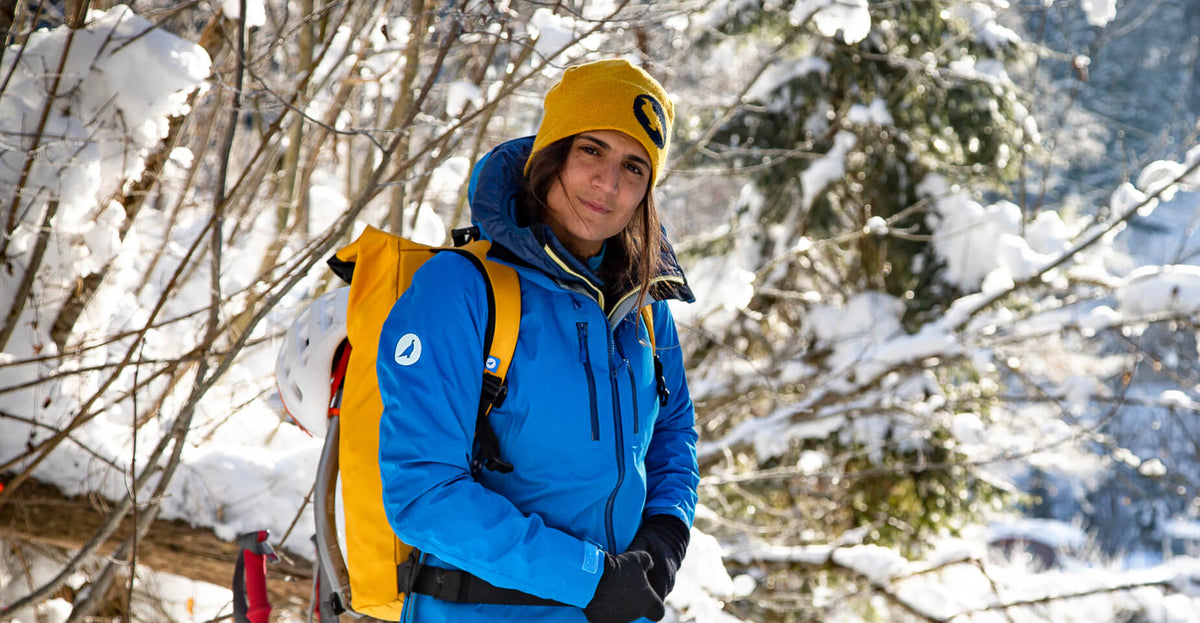
Taking action for the glaciers: a cross-country ski trip with the Lagoped family
|
|
Time to read 3 min
|
|
Time to read 3 min
At Lagoped, our ambassadors are, above all, nature and mountain enthusiasts who fully embrace their commitment to more sustainable practices. Christelle Bakhache , a member of the Lagoped Family , embodies this spirit. A mountaineer, climber, and lover of the great outdoors, she combines her passion for summits with a scientific and sensitive perspective on the evolution of glaciers. On the occasion of the International Year of Glaciers 2025 , she chose to take action by participating in the "Act for Glaciers" festival, and by going there... on skis! Discover her story.
2025 is the International Year of Glaciers . One might wonder what these years and days mean, given that the events, challenges, and actions that provoke them are not limited to a year, a day, or an hour spent at their bedside. However, these institutional trumpets allow us to focus our often diffuse attention on a subject long enough to put it back on our agendas.
This is how, in this year of glaciers, the “Act for Glaciers” festival was born on the initiative of the Marge Sauvage association.
In my professional and personal context, the future of glaciers and the ecosystems that follow them concerns me. As a practitioner, I see the routes crossing them evolving , through partial mutations or total disappearance. As a nature sports project manager for a natural spaces conservatory , I follow the initiatives of protection or, on the contrary, colonization by our activities of these new de-iced spaces or of these last spaces in snow on the remains of glaciers undergoing climate change.
It was therefore logical that I travel to Bourg Saint Maurice to attend the conferences and performances. I also planned to meet my peers who work in these spaces or depend on them in their professional and personal lives as residents and socio-professionals of the Alpine valleys.
I must admit that in 6 years of alpine life, I had not yet visited Bourg Saint-Maurice. Looking at a map and the routes to get there, I noticed how close this town was as the crow flies to my usual living and working environment. Where the road took me around the peaks, the old paths took me up them. The point of contact between our two valleys, the Arve and Tarentaise, is the Col du Bonhomme. I know it well since it is located in the Contamines Montjoie nature reserve where I work regularly. And I know that in winter, it is easily covered by ski touring, opening onto the Beaufortain landscape and a few dozen kilometers lower: Bourg Saint Maurice.
So why not go to the bedside of the glaciers and take care of them for a few days, using my legs instead of a car? Whatever happens, the trains between Alpine valleys are almost as slow as me on foot.
The idea took root, the route was mapped out. And every time someone asked me, "Are you going to Agir Pour Les Glaciers?" I replied, "Yes, on skis, do you want to come?" That's how the team was formed: two committed athletes, the curator of the Contamines-Montjoie nature reserve, and me. We set off from home, skis on (well, more like backpacks up to 1,700m in this warm early spring) in the early morning on a melting Roman road. And yes, our path begins on a Roman road that has for centuries connected the two Savoies by their gentlest point of contact at some 2,470m above sea level.
The team is moving at a good pace. Elise and Hillary are moving quickly ahead, and we're clinging on—not exactly at their heels. We're sticking to our schedule, including a break in the comfortable common room of the Croix du Bonhomme refuge, which is open in winter. A few carpeted turns later, miles of pushing on poles and walking in the forest bring us to town, right on time for Protect Our Winters ' launch of the aperitif.
The entire mountain ecosystem is here: brands that are getting involved, athletes (and athletes) who are questioning themselves, academics who are searching, and the managers of these spaces. A cultural event to talk about the wild side of the world—isn't that the beginning of reconciliation? Our journey through the altitudinal levels had, in any case, prepared us for these stretches of imagination where scientists become poets, the arts translate science, and humans re-nature themselves in the observation of the ice giants. And you, what are you doing for the year of the glaciers?



